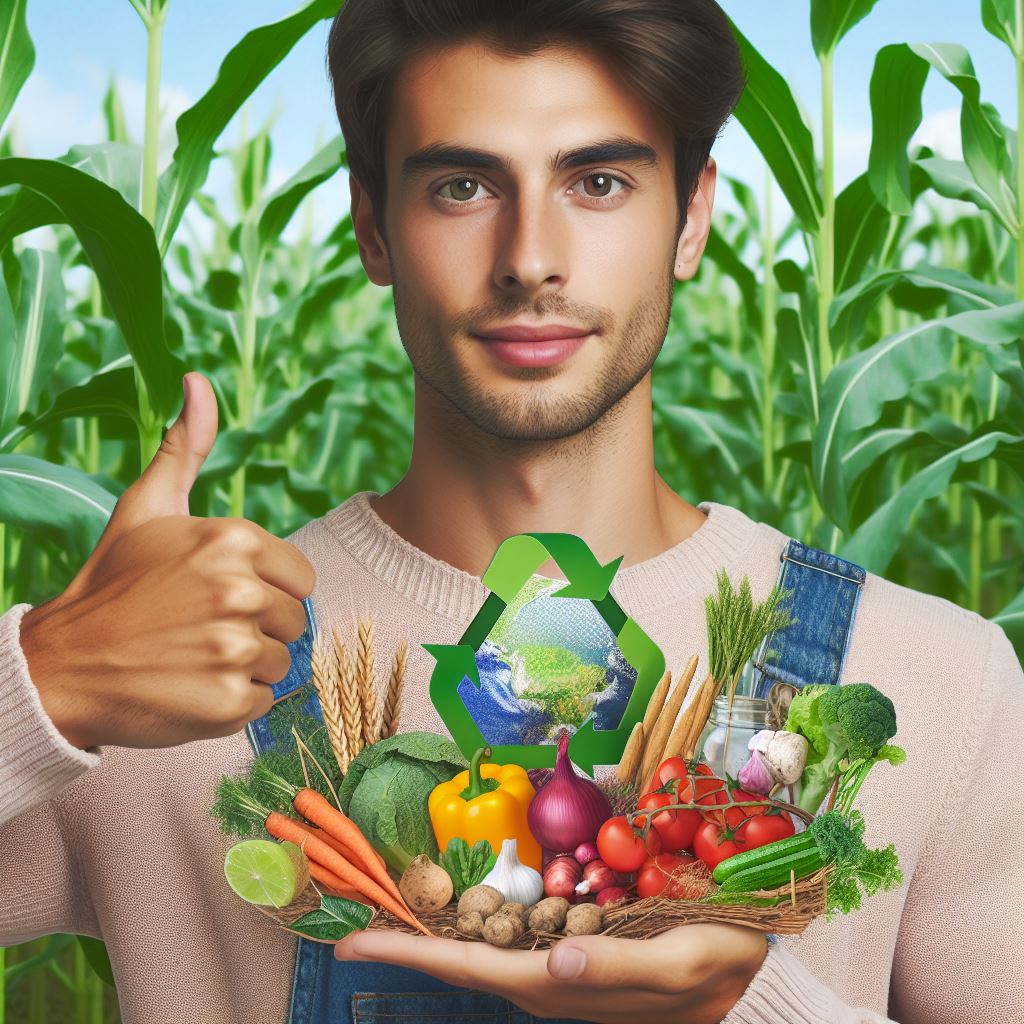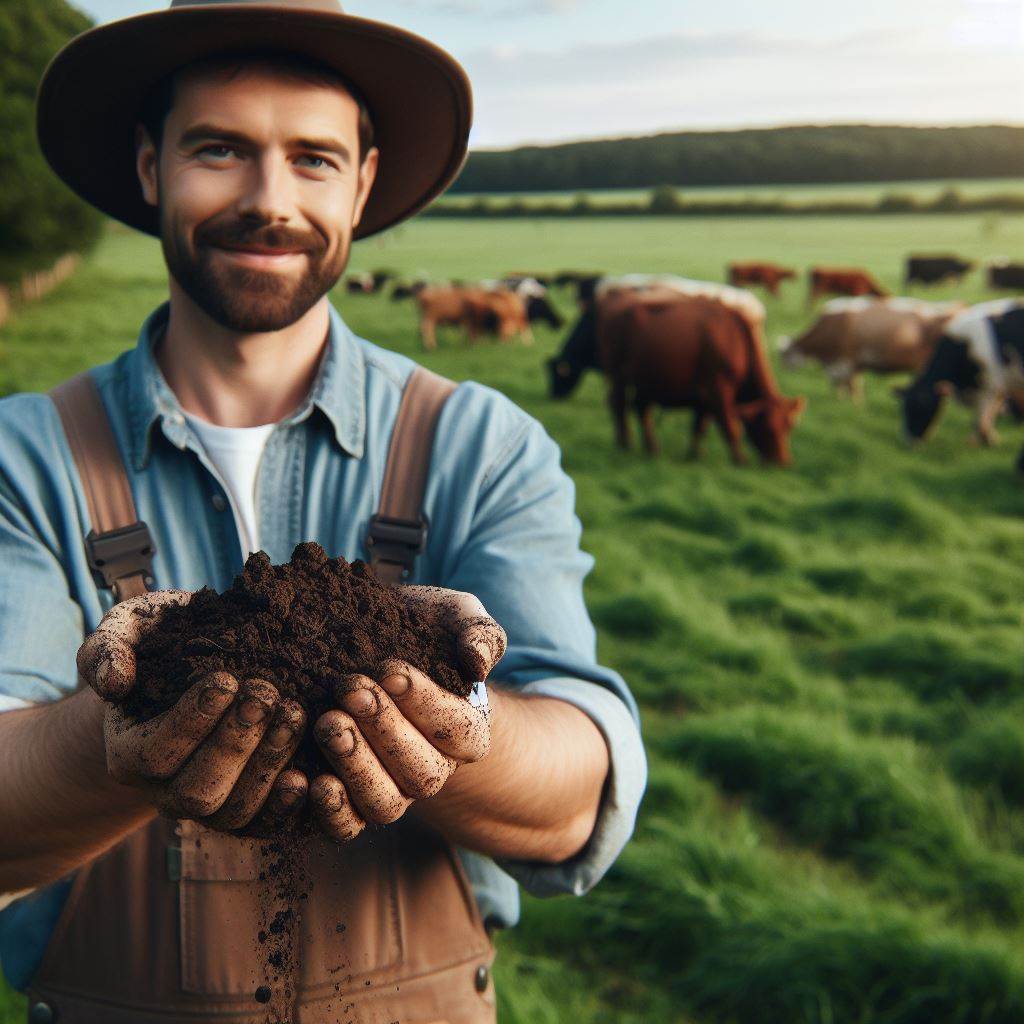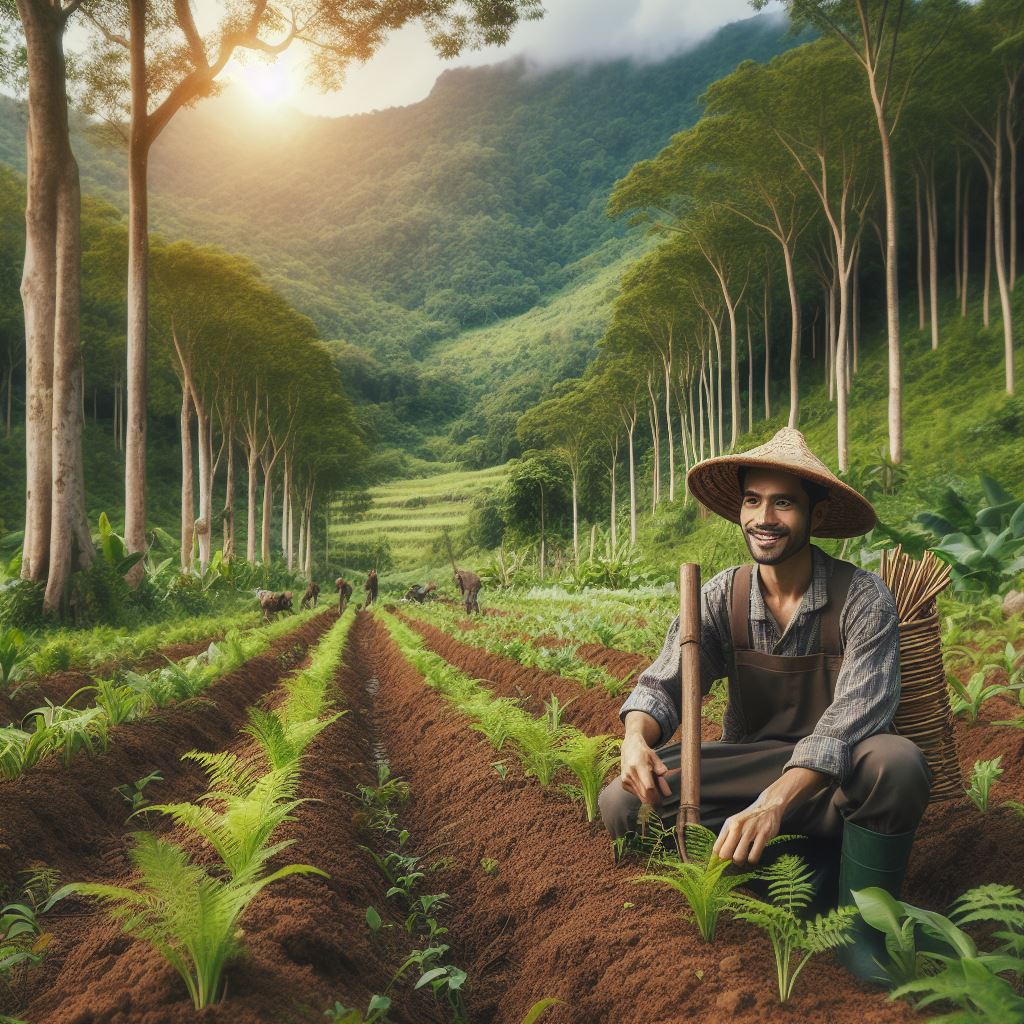Introduction
Let’s Explore High-Tech Farms: Sensors & Climate Change
High-tech farms have become prominent in modern agriculture, utilizing advanced technologies to enhance productivity and efficiency.
These farms incorporate sensors and innovative techniques to monitor and control various aspects of crop growth and environmental conditions.
Brief explanation of high-tech farms and their relevance in modern agriculture
High-tech farms involve the application of cutting-edge technologies to optimize agricultural processes.
They utilize sensors to capture data regarding soil moisture, temperature, and nutrient levels, enabling farmers to make informed decisions in real-time.
By leveraging automation and data analytics, these farms can achieve higher yields and reduce resource wastage.
Mention the importance of monitoring climate change for sustainable agricultural practices
Monitoring climate change is crucial for sustainable agricultural practices as it helps farmers adapt and mitigate its impacts.
High-tech farms use sensors to collect climate-related data, such as rainfall patterns and temperature fluctuations.
By understanding these changes, farmers can make informed decisions on irrigation, pest control, and crop selection, ensuring productivity and sustainability.
With the integration of advanced technologies, high-tech farms have revolutionized modern agriculture.
These farms not only increase productivity but also contribute to sustainable farming practices.
By monitoring climate change, farmers can adapt to new conditions and mitigate its negative effects, ultimately ensuring the longevity of agricultural practices.
Importance of Sensors in High-Tech Farms
Sensors as a crucial component in high-tech farms
High-tech farms have revolutionized the agriculture industry, and one crucial component in these farms is the use of sensors.
Sensors play a vital role in monitoring and controlling various environmental factors, making them indispensable in modern farming practices.
Sensors are devices that detect and measure physical, chemical, or biological properties of the environment.
Transform Your Agribusiness
Unlock your farm's potential with expert advice tailored to your needs. Get actionable steps that drive real results.
Get StartedIn high-tech farms, sensors are used to collect real-time data on crucial variables, helping farmers make informed decisions based on accurate information.
Different types of sensors used in agriculture (e.g., weather sensors, soil sensors)
There are different types of sensors used in agriculture, each serving a specific purpose in monitoring and optimizing farming conditions.
Weather sensors, for example, measure temperature, humidity, wind speed, and rainfall, providing farmers with essential weather data.
Soil sensors, on the other hand, monitor soil moisture, salinity, and temperature, enabling farmers to optimize irrigation and prevent water wastage.
These sensors help farmers ensure the right amount of water reaches the plants’ roots, promoting healthy growth while conserving water resources.
Other types of sensors include light sensors that measure the intensity and duration of sunlight, enabling farmers to adjust lighting conditions for plants grown in greenhouses or indoor facilities.
Additionally, nutrient sensors help farmers monitor nutrient levels in the soil, allowing them to provide precise and targeted fertilization.
Benefits of using sensors for data collection and analysis
The benefits of using sensors for data collection and analysis in high-tech farms are numerous.
Firstly, sensors provide accurate and real-time data, allowing farmers to make timely decisions and respond quickly to changing environmental conditions.
By collecting data on weather patterns, for example, farmers can anticipate and prepare for extreme weather events, minimizing crop losses and ensuring crop health.
Sensors also enable continuous monitoring, eliminating the need for manual data collection, which can be time-consuming and prone to errors.
Furthermore, sensors help farmers achieve optimal resource management.
With soil sensors, farmers can precisely determine the irrigation needs of their crops, reducing water usage and avoiding oversaturation.
This not only conserves water but also prevents water runoff and leaching of nutrients into the surrounding environment.
Moreover, the data collected by sensors can be analyzed to identify trends and patterns, enabling farmers to make informed decisions for long-term planning and future crop cycles.
By analyzing historical weather data collected by weather sensors, farmers can predict climate patterns and adjust their planting schedules accordingly.
The use of sensors in high-tech farms also promotes sustainability.
By optimizing resource usage and reducing waste, farmers can minimize the negative environmental impact of agriculture.
Additionally, sensors aid in the early detection of pests and diseases, enabling farmers to take prompt action and prevent large-scale infestations.
Therefore, sensors are crucial components in high-tech farms, playing a significant role in data collection and analysis to enhance farming practices.
With the ability to monitor and control various environmental factors, sensors empower farmers to make informed decisions, increase productivity, and promote sustainable agricultural practices.
Read: Cover Crops: Heroes in Climate Battle
Monitoring Climate Change
Climate change has become a major concern for agriculture, as it has a significant impact on crop yields and overall farm management.
To effectively adapt to these changes and ensure sustainable food production, it is crucial to actively monitor climate change.
Showcase Your Farming Business
Publish your professional farming services profile on our blog for a one-time fee of $200 and reach a dedicated audience of farmers and agribusiness owners.
Publish Your ProfileThis is where sensors play a vital role in providing accurate data on climate-related variables such as temperature, humidity, and rainfall.
Let’s delve deeper into the impact of climate change on agriculture, the need for monitoring, and the role of sensors in this process.
Impact of Climate Change on Agriculture
Climate change has brought about unpredictable weather patterns, including increased droughts, flooding, and extreme temperatures.
These environmental shifts directly affect crop growth, leading to reduced yields, loss of biodiversity, and increased pest and disease pressures.
With a growing global population, ensuring a stable food supply becomes even more challenging.
To tackle these challenges, farmers have to adapt their farming practices to the changing climate.
This requires a deep understanding of the local climate conditions and precise monitoring of climate-related variables.
The Need to Monitor Climate Change for Effective Farm Management
Farmers need to closely monitor climate change to make informed decisions on irrigation, planting and harvesting times, pest control, and crop selection.
Without accurate and up-to-date data, they risk making costly mistakes and facing significant yield losses.
Moreover, monitoring climate change allows farmers to detect long-term trends and anticipate future challenges.
By analyzing historical climate data alongside crop performance, farmers can identify patterns and adjust their practices accordingly.
This proactive approach enables them to mitigate the impacts of climate change and maximize their productivity.
The Role of Sensors in Monitoring Climate-Related Variables
To gather reliable data on climate-related variables, farmers utilize a range of sophisticated sensors.
These sensors are strategically placed throughout the farm to continually monitor different parameters, ensuring a comprehensive understanding of the microclimate dynamics.
Temperature sensors provide real-time data on ambient temperatures, allowing farmers to determine ideal conditions for planting, protect crops from frost, and optimize irrigation strategies.
Humidity sensors help assess the moisture content in the air, enabling farmers to prevent fungal diseases and regulate greenhouse humidity levels effectively.
Rainfall sensors track precipitation patterns, helping farmers determine when to irrigate and in what quantities.
This not only saves water but also prevents soil erosion and excessive nutrient leaching.
Besides these primary variables, sensors can also monitor secondary factors like wind speed and solar radiation.
These measurements assist farmers in optimizing windbreaks, predicting wind-borne pest attacks, and assessing solar energy potential for renewable energy usage on the farm.
By utilizing sensor data and advanced analytics, farmers can make data-driven decisions to adapt their farming practices to changing climate conditions effectively.
This allows them to minimize risks, optimize resource utilization, and ultimately achieve sustainable agricultural systems.
Most importantly, monitoring climate change is vital for effective farm management in the face of climate variability.
By actively monitoring climate-related variables through sensors, farmers can gather accurate and real-time data to make informed decisions.
This enables them to adapt their practices and mitigate the impacts of climate change, ensuring sustainable food production for the future.
Sensing technologies provide the tools needed to face this challenge head-on and pave the way for high-tech farms that can thrive in a changing climate.
Read: Protecting Soil in a Warmer World

Benefits of Sensor Technology in Climate Change Monitoring
In recent years, the use of sensor technology in climate change monitoring has gained significant importance.
Sensors play a crucial role in collecting precise real-time climate-related data, which is then used to assess the impact of climate change on crops and soil health, as well as optimizing irrigation and fertilizer application.
Let’s take a closer look at the benefits of sensor technology in climate change monitoring:
Collecting Precise Real-Time Climate-Related Data
- Sensors aid in the collection of accurate and timely climate-related data, providing invaluable insights into changing environmental conditions.
- Real-time data collection allows for the detection of subtle changes in temperature, humidity, and other climatic factors that may impact crop growth.
- By measuring various climate variables, sensors provide a comprehensive understanding of the current state of the environment.
Assessing the Impact of Climate Change on Crops and Soil Health
- Data collected from sensors can be analyzed to evaluate the effects of climate change on crop yield and quality.
- Certain sensors, such as soil moisture sensors, help monitor soil health and determine the optimal moisture levels for crop growth.
- By tracking changes in temperature and rainfall patterns, sensors assist in predicting the occurrence of pests and diseases that may affect crop health.
Optimizing Irrigation and Fertilizer Application based on Climate Conditions
- Sensors provide real-time information on soil moisture levels, allowing farmers to implement precise irrigation strategies.
- By avoiding overwatering or underwatering, the use of sensors ensures efficient water usage and minimizes water wastage.
- Sensors also help in determining the right amount of fertilizers to be applied based on soil nutrient levels and weather conditions.
- This optimization not only improves crop productivity but also reduces the environmental impact of excessive fertilizer use.
In essence, sensor technology plays a vital role in climate change monitoring for high-tech farms.
It enables the collection of precise real-time climate-related data, which helps assess the impact of climate change on crops and soil health.
Additionally, sensors aid in optimizing irrigation and fertilizer application, facilitating sustainable farming practices.
As we continue to face the challenges posed by climate change, the integration of sensor technology in agricultural systems becomes increasingly crucial for enhancing productivity and preserving our natural resources.
Read: Climate Change: Its Effects on Soil Health
Case Studies: Successful Implementation of Sensor Technology in Climate Change Monitoring
In recent years, high-tech farms have embraced the use of sensor technology to monitor and adapt to climate change.
Let’s explore some case studies highlighting successful implementation of sensors in these farms.
Green Harvest Farm
- Utilizes sensor technology to monitor temperature, humidity, and soil moisture levels.
- Real-time data from sensors helps identify optimal planting times and adjust irrigation accordingly.
- Resulted in higher crop yield, reduced water usage, and improved farming efficiency.
Smart Vineyards
- Sensors measure soil conditions, weather patterns, and grapevine health.
- Data analysis from sensors allows vineyard managers to optimize irrigation and detect diseases early.
- Increased grape quality, minimized water wastage, and enhanced disease prevention.
Precision Livestock Farming
- Sensors monitor animal behavior, feeding patterns, and barn conditions.
- By analyzing sensor data, farmers can optimize feeding schedules and adjust heating/ventilation.
- Improved animal welfare, increased production efficiency, and reduced environmental impact.
These examples showcase the positive outcomes and benefits achieved through the use of sensor technology.
Benefits of Sensor Technology in Climate Change Monitoring
- Enhanced Decision-making: Real-time data empowers farmers to make informed decisions for optimal farm management.
- Resource Efficiency: Sensors enable precise use of resources like water, fertilizers, and energy, minimizing waste.
- Early Detection of Issues: Sensor data helps identify early signs of problems, preventing crop losses and reducing risks.
- Increased Yield and Quality: Monitoring and adjusting environmental factors lead to improved crop yield and product quality.
- Sustainability: By using sensors, farmers contribute to sustainable farming practices, reducing environmental impact.
These farms have taken specific measures to adapt to changing climate conditions based on sensor data.
Adapting to Changing Climate Conditions
- Changing Planting and Harvesting Schedules: Sensor data guides farms in adjusting crop calendars to match changing climate patterns.
- Implementing Precision Irrigation Systems: Sensors help optimize irrigation, decreasing water usage without compromising plant health.
- Introducing Protective Measures: Sensor data alerts farmers to extreme weather events, enabling them to implement protective measures in advance.
- Modifying Farm Management Practices: Sensor technology supports the adoption of climate-smart farming techniques.
- Investing in Renewable Energy: Farms leverage sensor data to identify opportunities for sustainable energy generation.
In fact, the successful implementation of sensor technology in high-tech farms has proven advantageous in monitoring climate change and adapting to changing conditions.
Showcase Your Farming Business
Publish your professional farming services profile on our blog for a one-time fee of $200 and reach a dedicated audience of farmers and agribusiness owners.
Publish Your ProfileBy utilizing sensors, these farms have achieved improved productivity, resource efficiency, and sustainability in their operations.
Read: Adapting Farming to Climate Shifts
Find Out More: Crops vs. Climate: Diversity for Stability
Challenges and Limitations
- Implementing sensor technology for climate change monitoring poses several potential challenges.
- One major challenge is the high cost associated with acquiring and deploying advanced sensor systems.
- Additionally, compatibility issues may arise when integrating sensor technology with existing farm infrastructure.
- Data interpretation presents yet another challenge, as sensors generate large volumes of complex information.
- Ensuring the accuracy and reliability of the collected data is imperative for effective climate change monitoring.
While these challenges may seem daunting, advancements in sensor technology offer possible solutions.
Possible Solutions and Advancements
- Developments in sensor manufacturing are expected to significantly reduce the cost of acquiring and deploying these technologies.
- More affordable sensors will allow farmers of all scales to engage in climate change monitoring.
- Moreover, advancements in compatibility will ensure seamless integration of sensor technology with various farm systems.
- Interoperability standards can be developed to ensure compatibility between different sensor devices and platforms.
- At the same time, efforts should be made to simplify data interpretation for farmers who may lack technical expertise.
- Data visualization tools can be created to present the collected information in a user-friendly and easily understandable format.
- Machine learning algorithms can play a crucial role in analyzing and interpreting the vast amount of sensor data.
By leveraging artificial intelligence, sensor technology can learn from past data and provide actionable insights.
Overcoming Data Interpretation Challenges
- Training programs and workshops can be organized to educate farmers on data interpretation techniques.
- Collaborations with experts in the field can help farmers make sense of the complex data generated by sensors.
- Furthermore, advancements in sensor technology can improve the accuracy and reliability of the collected data.
- Sensors with higher precision and sensitivity will enhance the accuracy of climate change monitoring.
- Continuous research and development efforts should be focused on improving the capabilities of sensor systems.
- Efforts can be made to develop sensors that are capable of collecting a wider range of environmental data.
- Integration of multiple sensors in a network can provide a more comprehensive view of climate variables.
With the right approach, these advancements in sensor technology can revolutionize high-tech farming practices.
In short, while challenges exist in implementing sensor technology for climate change monitoring, there are viable solutions and advancements available.
By overcoming cost and compatibility issues and addressing data interpretation challenges, high-tech farms can harness the power of sensor technology to ensure effective climate change monitoring and make informed decisions for sustainable agriculture.
Conclusion
High-tech farms and sensor technology play a crucial role in monitoring climate change.
By using sensors, farmers can gather accurate data on weather patterns, soil moisture levels, and crop growth.
This information allows farmers to make informed decisions, adjust irrigation systems, and optimize fertilizer use.
Moreover, sensor technology promotes sustainable farming practices by reducing water waste and minimizing environmental impact.
By monitoring climate change, farmers can adapt their practices to mitigate risks and optimize crop yields.
Therefore, it is essential for farmers to embrace high-tech farms and adopt sensor technology for climate change monitoring.
With the help of these innovative tools, farmers can contribute to a more sustainable and resilient agricultural sector.
By incorporating sensors into their farming practices, farmers can not only protect their crops but also contribute to addressing climate change at a broader scale.
So, let us join hands and embrace high-tech farms and sensor technology for a greener and more sustainable future.




